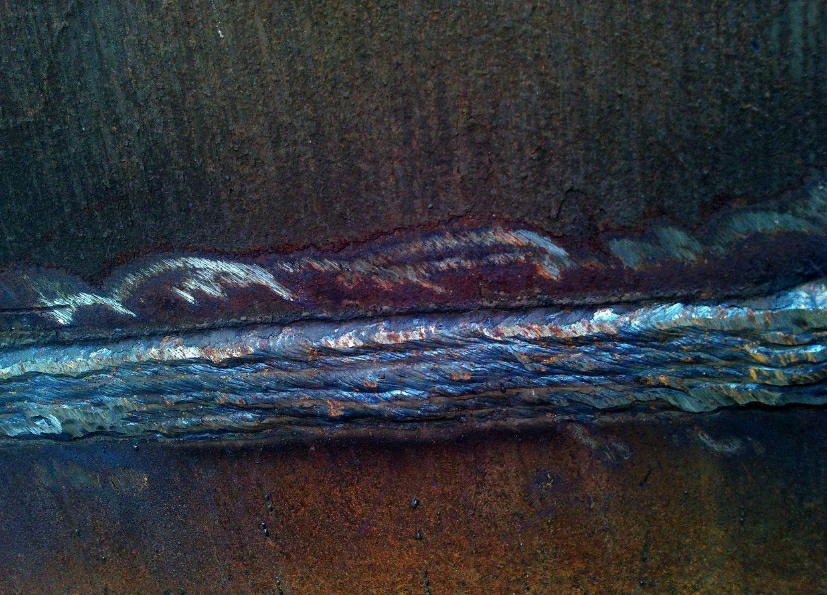Preventing Weld Undercut Demystified: Methods for Success
Preventing Weld Undercut Demystified: Methods for Success
Blog Article
Understanding the Art of Welding: How to Prevent Undercut Welding Issues for Flawless Fabrication Results
Effectiveness and accuracy are extremely important in the globe of welding, where also the least imperfection can compromise the architectural stability of a fabricated item. One typical challenge that welders face is damaging, a problem that can weaken a weld joint and lead to expensive rework. By comprehending the origin of undercut welding and executing efficient methods to avoid it, welders can elevate their craft to new degrees of quality (Preventing weld undercut). In the quest of flawless construction outcomes, grasping the art of welding to avoid undercut problems is not simply a skill yet a necessity for those pursuing perfection in their work.
Understanding Undercut Welding

To stop undercut welding, welders must make sure appropriate welding parameters, such as changing the present, voltage, travel speed, and preserving the right electrode angle. Furthermore, using the ideal welding method for the details joint arrangement is crucial. Employing weaving movements or backstepping methods can aid make sure appropriate weld metal deposition and reduce the likelihood of undercut formation. Routine assessment of welds during and after the welding procedure is additionally essential to capture any undercut very early and make necessary adjustments to avoid additional defects. Preventing weld undercut. By understanding the root causes of undercut welding and applying safety nets, welders can accomplish top notch, structurally audio welds.
Reasons For Undercut in Welding
Understanding the aspects that contribute to undercut in welding is crucial for welders to create high-quality, structurally audio welds. Insufficient welding incorrect or existing welding rate can likewise add to undercut. Comprehending these reasons and executing appropriate welding techniques can aid prevent damaging issues, making sure strong and long lasting welds.
Strategies to stop Undercutting

To minimize the risk of damaging in welding, welders can employ strategic welding techniques aimed at enhancing the quality and stability of the weld joints. Furthermore, utilizing the appropriate welding method for the certain joint configuration, such as weave or stringer beads, can add to lowering undercutting.
Additionally, proper joint preparation, consisting of making certain clean base products free of impurities and utilizing the ideal welding consumables, is important in stopping undercut issues. Utilizing back-step welding techniques and controlling the weld grain profile can also assist disperse warm evenly and decrease the danger of undercut. Routine evaluation of the weld joint throughout and after welding, along with applying high quality guarantee steps, can help in discovering and addressing undercutting issues promptly. By carrying out these methods diligently, welders can achieve flawless construction results with minimal undercut flaws.
Importance of Correct Welding Specifications
Picking and maintaining proper welding parameters is vital for attaining effective welds with minimal issues. Welding specifications refer straight from the source to variables such as voltage, present, take a trip rate, electrode angle, and securing gas circulation rate that straight impact the welding process. These parameters should be very carefully changed based on the kind of product being bonded, its density, and the welding method employed.
Correct welding specifications ensure the right quantity of heat is related to thaw the base metals and filler material evenly. If the parameters are set too expensive, it can lead to too much heat input, creating spatter, burn-through, or distortion. On the other hand, if the parameters are also low, insufficient combination, lack of infiltration, or undercutting may happen.
Quality Control in Welding Operations

Conclusion
To conclude, grasping the art of welding needs a thorough understanding of undercut welding, its reasons, and methods to stop it. By making certain appropriate welding criteria and executing quality control techniques, flawless construction results can be attained. It is vital for welders to constantly pursue excellence in their welding operations to prevent undercut issues and generate top quality welds.
Undercut welding, a typical issue in welding procedures, occurs when the weld steel does not properly fill the groove and leaves a groove or clinical depression along the bonded joint.To prevent undercut welding, welders should make sure proper welding criteria, such as readjusting the present, voltage, travel speed, and preserving the proper electrode angle. Inadequate welding present or inaccurate welding rate can additionally contribute to damage.To reduce the risk of damaging in welding, welders can utilize critical welding techniques intended at improving the top quality and integrity of the weld joints.In final thought, mastering the art of welding requires a thorough understanding of undercut welding, its reasons, and methods to avoid it.
Report this page